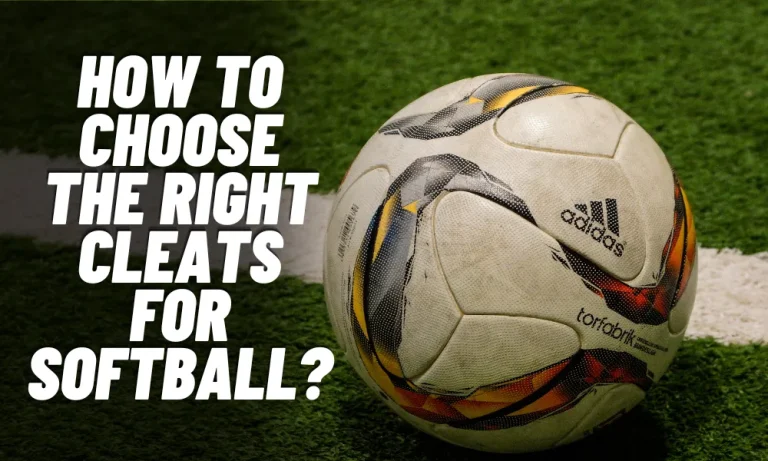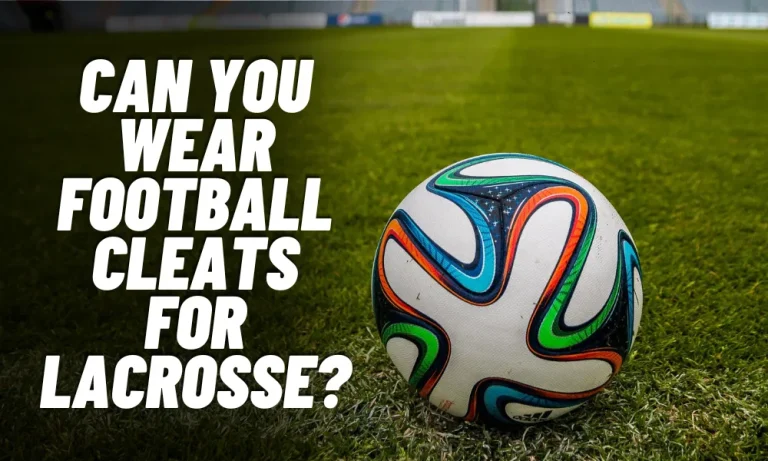Can You Wear Soccer Cleats in Football?
Can you wear Soccer Cleats in Football? It’s a question that often pops up among sports enthusiasts and players looking for the perfect footwear for their football games. Before diving into the answer, let’s first understand the difference between soccer and football. Soccer, known as football in many parts of the world, is a sport where players use their feet to control and maneuver the ball. On the other hand, football, primarily played in North America, involves a mix of running, passing, and tackling.
When it comes to football, having appropriate footwear is crucial for performance and safety. The right pair of cleats can provide the necessary traction, stability, and support on the field. But what about soccer cleats? Can they be used interchangeably in football? In this article, we will delve into this topic, exploring the similarities and differences between soccer and football cleats, and help you make an informed decision about the best footwear for your football games.
Understanding the Difference
When it comes to the question of wearing soccer cleats in football, it’s essential to understand the key differences between these two sports. While both soccer and football involve running and kicking a ball, their rules and gameplay vary significantly.
In soccer, players aim to score goals by maneuvering the ball into the opponent’s net using their feet or any part of their body except their arms and hands. The emphasis is on skillful ball control, passing, and strategic positioning. Soccer cleats are designed to enhance agility, provide excellent ball feel, and allow quick changes of direction on grass or turf surfaces.
On the other hand, football, primarily played in North America, features a mix of running, passing, and tackling. The objective is to advance the ball down the field and score touchdowns by crossing the opponent’s goal line. The game involves more physicality and contact than soccer, with players wearing protective equipment such as helmets and shoulder pads. The footwear requirements in football differ from those in soccer due to the nature of the game.
Understanding these differences is crucial in determining whether soccer cleats are suitable for football. While soccer cleats offer certain advantages, such as comfort and versatility, they may not provide the necessary traction, stability, and ankle support required for the specific demands of football. Therefore, it is generally recommended to opt for purpose-built football cleats or other appropriate footwear options for optimal performance and safety on the football field.
Soccer Cleats vs. Football Cleats
When considering whether to wear soccer cleats in football, it’s crucial to understand the differences between these two types of footwear. Soccer cleats are specifically designed for the sport of soccer, focusing on enhancing agility, ball control, and quick movements on grass or turf surfaces.
Soccer cleats typically feature low-profile studs or blades that provide traction and stability while allowing players to make swift changes in direction. The upper part of soccer cleats is often made of lightweight materials like synthetic leather or mesh, offering a close and comfortable fit to enhance ball feel and touch.
On the other hand, football cleats are designed to cater to the unique demands of the game. Football cleats feature a more robust construction with higher ankle support, as football involves more physicality and tackling. The studs on football cleats are often longer and more widely spaced to provide better traction on different playing surfaces, including grass, turf, or artificial turf.
While soccer cleats may seem similar to football cleats at first glance, the variations in design and functionality make them less ideal for football. Wearing soccer cleats in football may compromise the necessary ankle support, stability, and traction required for the game. Therefore, it is generally recommended to opt for purpose-built football cleats to ensure optimal performance and safety on the football field.
Factors to Consider
When deciding whether to wear soccer cleats in football, there are several factors to consider. Firstly, the rules and regulations of football may require specific types of cleats, such as those with longer studs or certain safety features. It’s essential to check with the league or team guidelines to ensure compliance.
Secondly, the playing surface can greatly impact the choice of cleats. While soccer cleats are designed for grass or turf surfaces, football can be played on various terrains, including grass, turf, or artificial turf. Different playing surfaces may require different types of cleats to provide optimal traction and performance.
Furthermore, consider the specific position you play in football. Different positions have varying demands on footwork, agility, and stability. For example, linemen may require cleats with more traction and ankle support, while wide receivers may prioritize lightweight cleats for speed and maneuverability.
Lastly, personal comfort and preference should be taken into account. Trying on both soccer and football cleats and assessing their fit, feel, and overall comfort can help determine which is the better option for you. Remember, wearing the right cleats enhances performance and reduces the risk of injuries on the field.
Pros and Cons of Wearing Soccer Cleats in Football
Before deciding whether to wear soccer cleats in football, it’s important to weigh the pros and cons. One advantage of using soccer cleats is their versatility. They can be suitable for both soccer and football, eliminating the need for separate pairs of cleats for different sports.
Soccer cleats also tend to be more comfortable and lightweight compared to football cleats. This can provide a better overall experience on the field, especially during long practices or games. Additionally, soccer cleats often offer excellent ball feel and control, which can benefit players who rely on precise footwork and quick movements.
However, there are some drawbacks to consider when wearing soccer cleats in football. Soccer cleats may not provide the same level of ankle support and stability as football cleats, which can be crucial in a sport that involves more physicality and tackling. The studs on soccer cleats may also not be optimized for the specific playing surfaces and traction requirements of football, potentially affecting performance.
Ultimately, the decision to wear soccer cleats in football should be based on individual preferences, the specific rules and regulations of the league or team, as well as the playing conditions. It’s important to assess the trade-offs and consider the impact on performance, comfort, and safety before making a choice.
Alternatives to Soccer Cleats
If soccer cleats are not suitable for football, there are alternative options to consider. One alternative is football cleats, specifically designed for the demands of the game. Football cleats offer features such as higher ankle support, better traction, and studs optimized for various playing surfaces.
Another alternative is multi-sport cleats, which are designed to accommodate different sports, including soccer and football. These cleats often have a hybrid design that combines elements from both soccer and football cleats, providing a balance of comfort, traction, and versatility.
In some cases, depending on the playing surface, it may be possible to wear turf shoes or athletic shoes with molded rubber studs. These shoes offer good traction on turf or artificial surfaces, and while they may not provide the same level of ankle support as football cleats, they can be a suitable option for non-contact football games or practices.
When considering alternatives to soccer cleats, it’s important to prioritize safety, performance, and adherence to league or team regulations. Trying different options, considering the playing surface, and understanding the specific demands of football can help in making an informed decision.
FAQs
1: Can I wear soccer cleats in football if they provide good traction?
Soccer cleats may not meet the specific traction requirements of football, which often demands longer studs for better grip.
2: Are soccer cleats allowed in professional football leagues?
Professional football leagues typically have specific regulations that require players to wear football-specific cleats for safety and performance reasons.
3: Can I use soccer cleats for non-contact football games or practices?
Depending on the playing surface, using soccer cleats for non-contact games or practices, particularly on turf or artificial surfaces, may be acceptable.
4: Will wearing soccer cleats in football affect my ankle support?
Soccer cleats generally offer less ankle support compared to football cleats, which could increase the risk of injuries due to football’s more physical nature.
5: Can I wear multi-sport cleats for both soccer and football?
Multi-sport cleats are designed to cater to various sports, including soccer and football, providing a versatile option for players participating in both sports.
Conclusion
In conclusion, the question “Can you wear Soccer Cleats in Football?” boils down to suitability and player preference. While soccer cleats may offer certain advantages, such as comfort and versatility, they might not provide the optimal traction and support required for football. It is recommended that football players invest in purpose-built football cleats or other suitable alternatives.
When choosing your footwear for football, consider factors like the playing surface, weather conditions, and the specific demands of the game. Remember, the right pair of cleats can significantly enhance your performance and reduce the risk of injuries. So, whether you’re a professional player or a passionate amateur, take the time to research, try different options, and make an informed decision.
Ultimately, the choice rests with you. Experiment, seek advice from experienced players, and find the cleats that feel comfortable and supportive on the football field. Enjoy the game and give your best, knowing that you have made a well-considered choice in your footwear.


